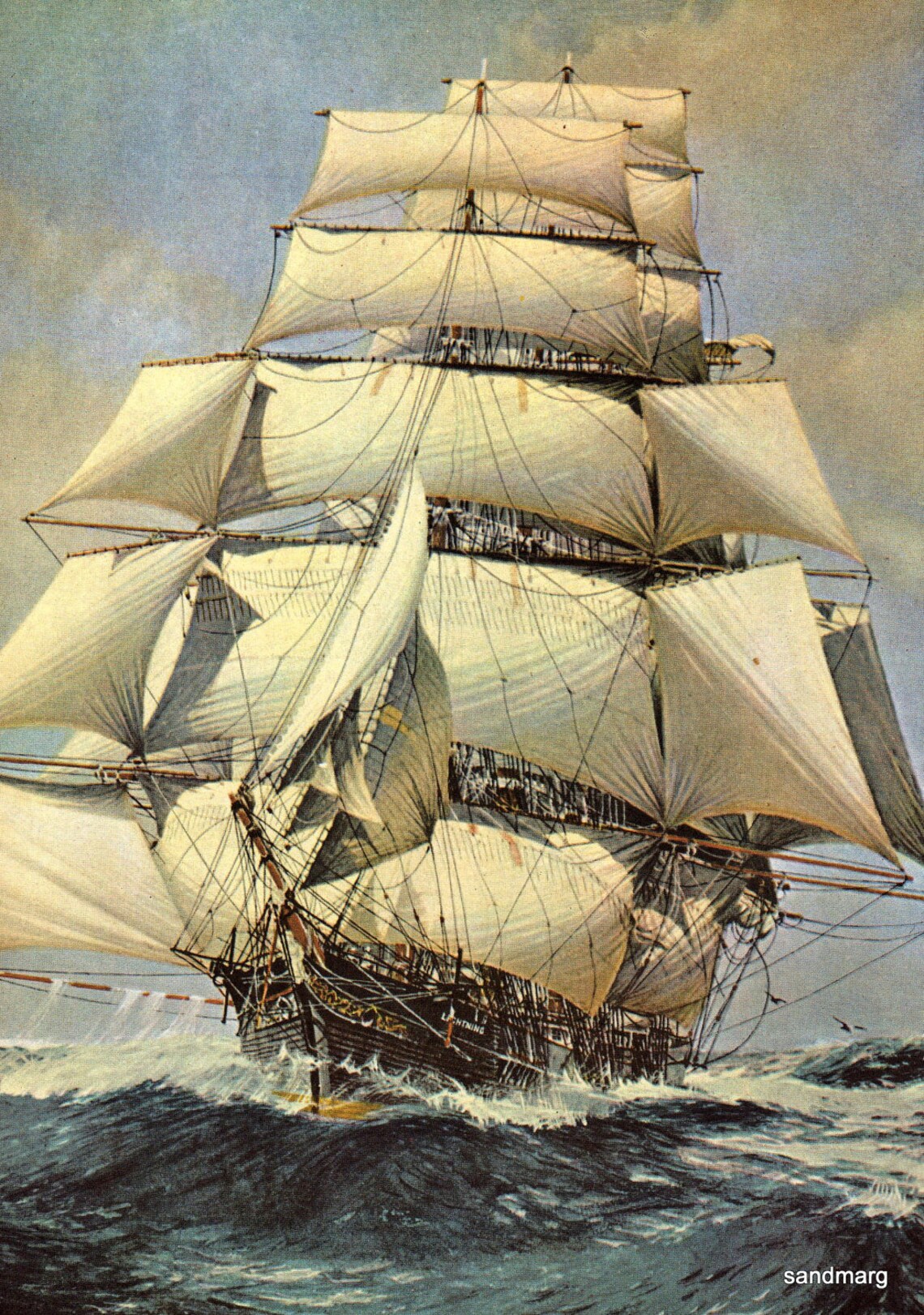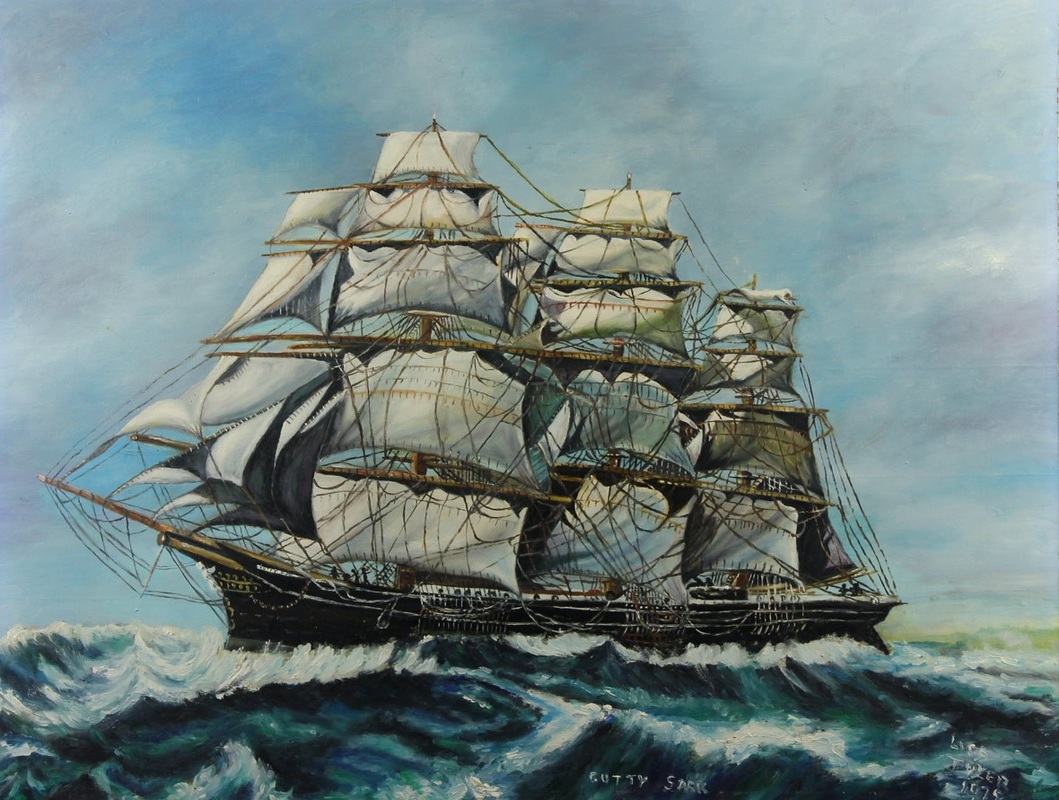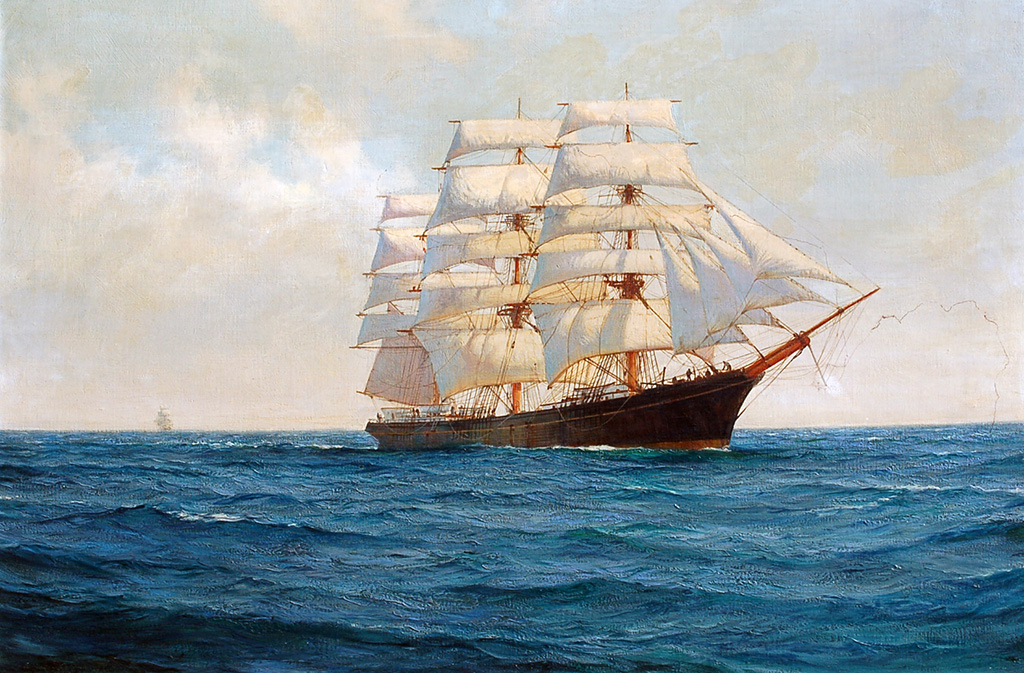

Thus, there is room for a certain range of opinion as to which ships came within that definition and which therefore were the first and last. The generally accepted definition of a clipper - it varies with different authorities - is vaguely “an extremely fine- lined sailing vessel designed primarily for speed”. It should be remembered that the term “clipper” is a popular and not a technical one. The Aberdeen shipbuilders also turned out schooners, beginning with the Scottish Maid, of 1839, which may be accepted as the first true clippers to beat the early paddle steamers on the coastal services. They found them successful, and built ships on finer lines which made better passages than the average.

The Americans used, for commercial purposes, the big privateers built for the war of 1812- 14. They did not, for example, follow the custom of snugging down to topsails at nightfall, but for a considerable period they were not appreciably faster than the Indiamen. When the East Indiamen lost their trading monopoly in the early nineteenth century, their successors certainly improved the passage times. The realization of the value of speed for overseas trade, and the appreciation of the means of obtaining it, came but slowly. The element of human skill, surprise and pure chance lent to the sailing- ship races a zest that is impossible in the steamer with her wonderfully calculated engineering performance and her regular wireless reports. Finally, in the captains’ rooms at Lloyd’s and the exchanges at the outports the dignified owners and merchants discussed little but passages and chances when each master rolled in to report his voyage to his owners and to distribute his latest news of distant seas. Tug captains in waterside taverns, on the look- out for the plums of the business, would carefully scan the Gazette for every report of progress, every hint of weather that would help their expert judgment to estimate the time and place of landfall. On board the racing clippers the captains, having bet the traditional new hat with their rival captains on the result, and carefully turned a blind eye to the bets made in the forecastle, would exchange signals with the ships they met for any suggestion that their competitors were ahead, and then quietly and with proper dignity make sure that the news found its way forward. Then keen- eyed Liverpool urchins would watch for the signals and race off to the owners’ office, confident of a generous reward if they brought the news before the regular service. It was efficiently done, and it was thrilling, but in human interest not to be compared with the days of the clippers. When the Bremen, Rex and Normandie created new Atlantic records, each day’s progress was sent in by wireless, and mathematically worked out to three places of decimals. Decks are sometimes awash for days at a time, and without the life- lines fitted up and down the deck - as shown in the left foreground - it would be impossible for the seamen to move from mast to mast when ordered to go aloft. Because of her low freeboard a sailing ship takes solid water over her rail in a manner unknown to most modern steamers. Yet so mighty were their deeds, and so romantic was their story, that the clipper ships have become an integral part of the sea.ĭECKS AWASH.

It was an age that still attracts much attention and interest, although the era of high speed for commercial sailing ships covers a remarkably short period of time in that history. THE age of the racing clippers was one of the most romantic in the history of the sea. A graphic account of the romantic clipper ships whose mighty deeds have added such an immortal chapter to the story of the Seven Seas


 0 kommentar(er)
0 kommentar(er)
